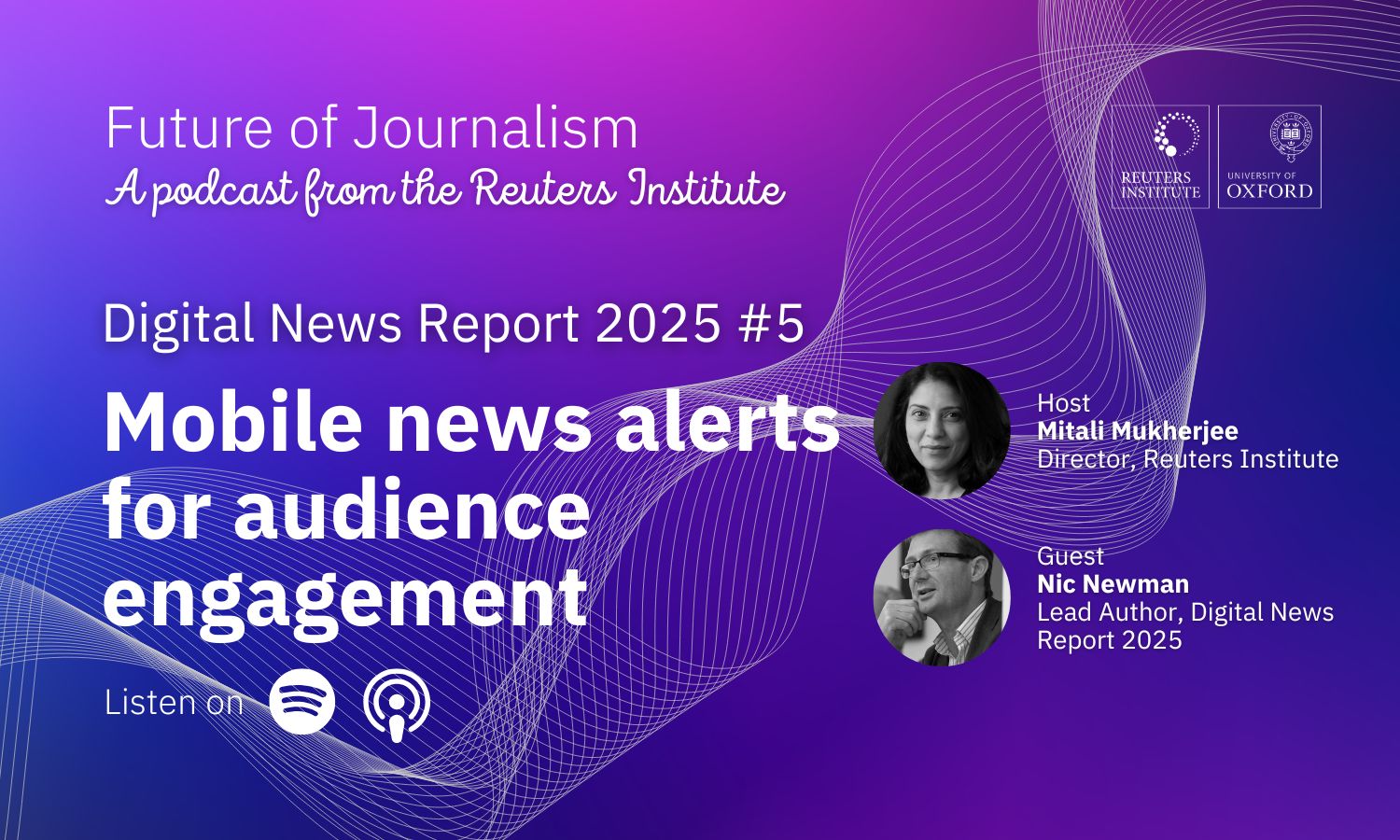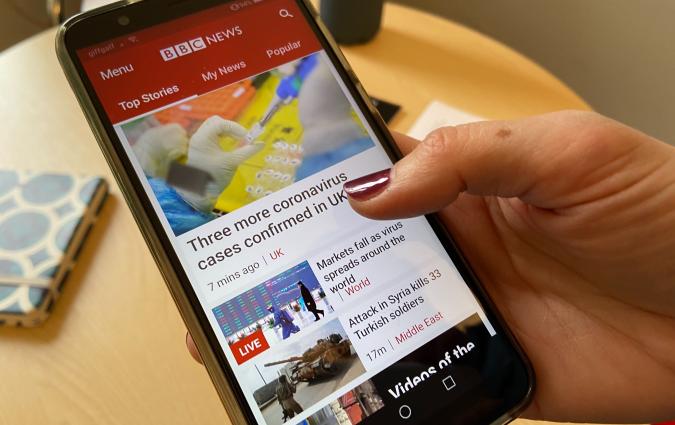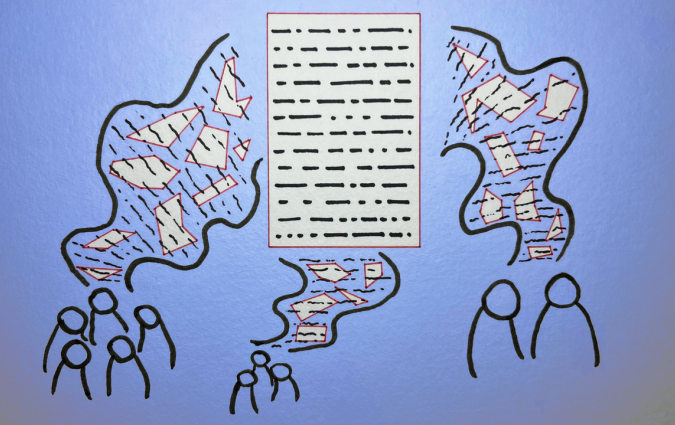Our podcast: Digital News Report 2025. Episode 5: Mobile news alerts for audience engagement

In this episode of Future of Journalism we explore the role of news alerts in distributing news and engaging audiences. We look at which brands and platforms are sending them and with what frequency, as well as what audiences think of them including why they may have turned them off. We also look at the approach that news outlets should take in order not to irritate loyal users through over use.
Speakers
Nic Newman is the lead author of the Digital News Report 2025 and is a senior research associate at the Reuters Institute.
Host Mitali Mukherjee is the Director of the Reuters Institute and is a political economy journalist with more than two decades of experience in TV, print and digital journalism.
Transcript
The role of mobile alerts in the news ecosystem | The target audience for news alerts | Where news alerts are prevalent | The frequency that publishers send news alerts | The drawbacks of mobile alerts
The role of mobile alerts in the news ecosystem ↑
Mitali: Let's dive straight in. Let's talk a little bit about trends around mobile news alerts, Nic, because this has been in the system for a long time. Walk us through what the value is as news publishers see it, and whether this is better or worse in terms of utility to other news gateways.
Nic: The wider context is that access online has been increasingly through platforms, so through search, through social media, of course, and so recently, many publishers are trying to build direct relationships where the tech companies are not in the way, if you like. And a key part of that is, can you get people to install an app on your mobile phone, and can you get them to accept notifications? Because then you can start to sort of build that loyalty, build that frequency of use. So mobile alerts are really a part of that relationship building process very much with existing users. And it's a little bit like newsletters, because part of the aim is that, once you've got people sort of signed up, if you like, can you get people to come back more regularly and turn them from irregular users to regular users?
One caveat, I should say, so those are sort of news alerts that come directly from news brands, but we also have aggregators increasingly operating in the space. So Apple News, Taboola on Apple and other aggregators as well, and they're sending alerts, and obviously, in that case that you don't have the direct publisher relationship, you're still working through an intermediate and aggregator. So we're kind of interested in how all that plays out in different markets as well.
Mitali: It is a tool that's been around for the last decade or more. Nic, can you talk a little bit about whether there's more data around the frequency of use by news consumers, and whether that's changed over the course of the last few years?
Nic: I mean, the majority of people don't get news alerts. It's important to say so. It is a minority. There are people who are just super interested in news broadly, on average across countries, about a fifth, so 21%, say they've got a mobile alert of some kind in the last week. It could be from a publisher, or it could be one of these aggregators. And the other thing to say is that it's increased a lot. So, you know, a decade ago, it was just a few percentage points, and now it’s 21% and about one in ten say it's their main way, main access point for news. So that lock screen is actually incredibly important. What turns up on that lock screen for about a tenth of people is really important. It's a really important part of what briefs them during the day, how they know what's going on, how they keep in touch, etc. The other thing I would say in terms of differences between countries, is that we find that access via mobile alerts is higher in global majority countries or in countries with younger populations that use mobile a lot. And obviously it very much goes hand in hand with the use of smartphones, which is very dominant in many of those countries.
The target audience for news alerts ↑
Mitali: And from the sample set you pointed to, it sounds like the absolute opposite of news avoiders. Can you talk a little bit about sort of the main groups of people who receive these mobile news alerts?
Nic: It is obviously people who are already super interested in news and are not broadly avoiding news. So one of the things we looked at was why people sign up to these alerts, what they enjoy about them. So here's a quote from a UK correspondent: “They alert me to big stories unfolding through the day, even when I'm too busy to sit or watch the news.” So it's that sense that you're interested in news, but you're at work. You're doing something else, but you want to keep in touch. Another one says, you know, it brings me information happening in real time again when I'm not watching news. So there's a point there also about being complementary to other sources, maybe alerts you to something you want to read later, or something you're going to sit down and watch on television later. So it very much works with other media as well as part of that brand loyalty.
Where news alerts are prevalent ↑
Mitali: Let's unpack the types of news brands that people tend to use with these alerts a little bit Nic and let's try and explore whether there are similarities or clear differences, using a few countries as examples. Perhaps, should we start with Northern Europe?
Nic: Yeah, so in many northern European countries, including the UK, we find that the alerts tend to be coming from brands that are already well trusted and have a reputation for breaking news. So a lot of broadcast brands and a lot of public service brands that are seen as independent as well. So in the UK, for example, BBC News, it has the most widely installed news app in the country, and it was mentioned by half of the respondents who get news alerts. So that's not half the people in the UK, it's half of the 21% or whatever, around three times as many as the sort of second place brand, which was Sky News. So I mean, just trying to put that in terms of raw numbers, that's the equivalent of about 4% of the adult population. So maybe around something like 4 million people will be notified every time the BBC sends one of those alerts. So that's a really significant challenge for alerting people and for building regular habit as well. In other countries, we don't see any brand that has that level of dominance. But again, in northern Europe, it tends to be, you know, ARD Tagesschau, for example, in Germany, and again, a lot of those public service brands in Nordic countries.
Mitali: So in terms of broad trends, preference for public service broadcasters, as you said, high trust legacy brands. That seems to be the preference. Is it quite different in other regions, in global majority nations, for example.
Nic: Very much so. So I guess one of the biggest differences is that a lot more of the news is delivered by these aggregators or other platforms. So we were looking at Kenya, for example, and there's an aggregator there called Opera News, which actually operates in many other territories as well. It plays a major role in India as well. And then Google YouTube alerts quite often. So if people are using YouTube for news, then YouTube sends alerts of things that it might be interested in. So it's a much wider range. There are obviously publishers involved as well, but the aggregators we find in global majority countries playing a much bigger role, and the aggregator role is really interesting, because, you know, there's more and more alerts from aggregators. This is more pressure on the lock screen, and so in many cases, increasingly, we're seeing aggregators trying to prioritise these because they don't want to overwhelm their consumers, and so prioritising, or de-prioritising those direct alerts from publishers, so there's a sort of, I think, increasingly, going to be a battle for space on that lock screen. And just because you send an alert doesn't necessarily mean it's going to get through in the future.
Mitali: The US has emerged as a very big story in the report this year. Nic is it sort of either of those two models, or is it…
Nic: a third one. Obviously, it’s always different in the US? Yeah. So it's a much more fragmented landscape, and what we find there is, again, broadcast brands come top of the list. So CNN, Fox News, which have that reputation, 24-hour news channels, of course, then it's near the top of the list, along with the New York Times. But it's also, again, it's striking to see how many more of the alerts come from aggregator brands in the US. So, in addition to Apple News, which is very strong there, Yahoo! News retains a very strong position. And then there's some aggregators. So NewsBreak, another AI-driven aggregator, and it's really built a lot of its growth recently on personalised, AI-driven, really understanding what your interests are and sending you these sort of hyper personalised alerts. So that's another interesting model.
The frequency that publishers send news alerts ↑
Mitali: Any cadence that seems common across all these news publishers Nic in terms of how frequently they send out the alerts?
Nic: So for this, actually, I used a tool that was developed by Matt Taylor, who's a developer at the Financial Times, and he's, for a number of years now, been tracking the number of news alerts sent by a range of different publishers around the world. And it's fascinating to see that some of them really send a lot, so they're really going for scale. So there are examples, I think we talked about Jerusalem Post, CNN Indonesia, sending about 50 alerts a day. In some countries, people maybe have a higher tolerance for a lot of alerts, but elsewhere, we see media companies really thinking very hard about how many they send, because there's obviously a danger that people are going to uninstall the app or turn off notifications altogether because they don't want to be distracted. So the BBC sends around 10, a day. Some organisations like The Times will send, you know, three or four a day. So they're really trying to just send a few so that they don't irritate or distract their sort of loyal users, but ones that are really going to provide value.
The drawbacks of mobile alerts ↑
Mitali: And that's an important sort of note to take, isn't it? Is that cited as one of the important reasons on why people choose not to receive alerts, or do they point to other reasons?
Nic: Yeah. I mean, across countries, almost half of people who say that they don't get alerts say that they have actively disabled them. So either when they install the app, they say, I don't want alerts, or after that, they feel that they are just getting too many alerts, or that they're not useful or relevant. So somebody here said: “They just annoyed me. So I turned them off.” Somebody else saying, you know, this in the US, “I turned off all my news apps and sites after Trump was elected,” somebody else says, “I've switched it off because it's emotionally distressing.” So linking to that theme we were talking about earlier of news avoidance, and yeah, that we definitely find that people who say they often or sometimes avoid the news are less likely to sign up in the first place and more likely to disable them.
Mitali: Where does that leave news publishers in terms of finding that sweet spot of, you know, using this tool well, but not overwhelming their news users? And just as an added layer to that Nic from, you know, from some of the quotes that you just shared, does that create tension between the publishers and the mobile operating systems, where they're getting this because they don't want users to essentially feel overwhelmed?
Nic: Yes, I think particularly in aggregate, that problem, you know, that's something the platforms are constantly talking to publishers about. You know, they see the pressure on that lock screen and the value of the lock screen. And so, you know, they often issue advice to publishers, you know, don't publish too many. This is the time of day to publish them. These are the ones that are really going to engage. But I think, you know, for publishers themselves, it is this, this tightrope. You know, you want to get people to use your app more regularly, so you want to send a lot of alerts, but you also don't want to put people off, annoy them, distract them. And I think part of the problem is that alerts have been this very blunt instrument in the past. It's just that you send them out relevant to some people, then not relevant to other people. And I think the future is going to be one of more sort of personalization, and that only works if you really know a lot about that person, can you give users more control as well? So, you know, some users want just the breaking news, and that's all they want. Others actually are really interested in things that more about serendipity or things they didn't know, or maybe more about features or what's on. You know, that's breaking the live news feed, and currently it's just this really blunt instrument. And I think going forwards, this incredibly useful, valuable tool needs to be more personalized, and it needs to be based on sort of audience insights at a much deeper level.
Mitali: Lots to take away there, particularly in terms of regional nuances. Nic, thanks, as always, for joining the podcast and the conversation today.
Nic: Pleasure.
Listen to the whole series
In every email we send you'll find original reporting, evidence-based insights, online seminars and readings curated from 100s of sources - all in 5 minutes.
- Twice a week
- More than 20,000 people receive it
- Unsubscribe any time







